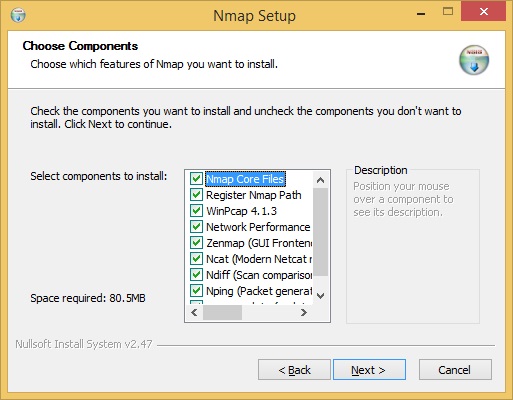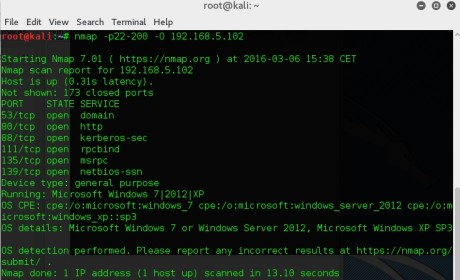


This will show you what the packets look like that you send and receive, with a handy little “sent” and “received” marker. Nmap done: 1 IP address (1 host up) scanned in 4.21 seconds This thing is awesome when it shows you that a port was open or filtered or whatever-it shows you the reason it thought so. Nmap –min-rate 500 $target The -reason Option He got it worked out, but he decided it was a good idea to be able to set a threshold for how hard you hit the network you’re scanning from. He started some of his first scans and got a call from his ISP. He actually found a need for this when he was doing his research. Ok, so now that we know what the top 10 ports are, wouldn’t it be cool to be able to scan based on them? And what if we wanted to scan the top 50? Or the top 100?Īnother feature that he’s been wanting to add for a while is rate limiting by packet count.
#Zenmap overview trial#
So what he did, through trial and error and tons of scans, was figure out the most frequently open ports on the Internet. One of the best ways to do this is to allow for scans of fewer ports, but this requires that you choose those ports carefully so as to miss as little as possible. One of Fyodor’s main focuses was improving Nmap’s speed through improved efficiency.

Svn co -username guest -password "" svn:///nmap-exp/bhdc08/ The current, stable branch does not have much of this functionality. Setupįirst off, in case you want to test out some of these features as well, you’ll need to get the version of Nmap that he was using during this presentation. What follows is a collection of the most interesting features he added, and information he learned, while doing his research. I was lucky enough to attend, and even got to chat with him briefly and get a signed copy of his new book.Īnyway, after receiving numerous complaints over the years regarding performance, he did some colossal scans of the Internet in order to see how Nmap handled extremely large address ranges. At Fyodor‘s talk last week at Blackhat he talked about the research he’s been doing, and the ways that research has helped him to improve Nmap.


 0 kommentar(er)
0 kommentar(er)
